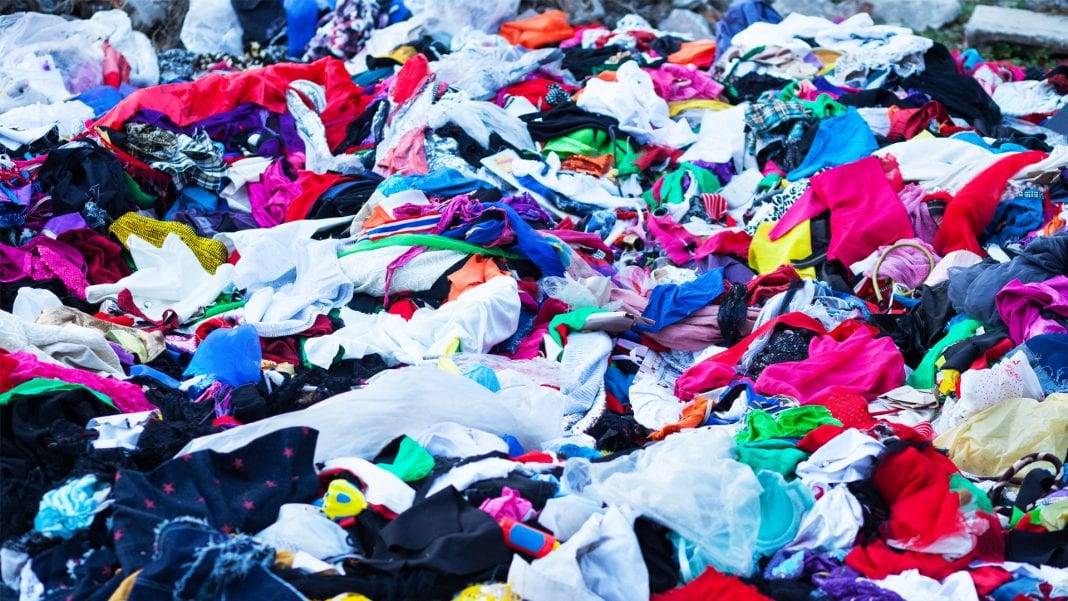“Fast fashion isn’t free. Somewhere, someone is paying.” — Lucy Siegle, The True Cost
What’s the first thing you see when you look in your closet? Your favorite turtleneck? Maybe that dress you wore once, two years ago. Or that top you thought was cute on the rack but haven’t quite found an occasion for. Yet, we’ve all been guilty of it: buying clothes we don’t need — and probably don’t even want — because it makes us happy in the moment. We might beat ourselves up about it, but the fact is that most clothing companies are hugely invested in convincing us to buy more by lowering prices and jumping on trends.
These companies belong to the “fast fashion” industry. If you own clothing from any major retailer (think H&M, Zara, or even Target), then you’re already familiar with fast fashion. Let’s take a look at what it is and why you should give a second thought to buying into it.
What is Fast Fashion?
Think of fast fashion as the apparel version of fast food. Cheap, quick to make, and of questionable quality. When it comes to how we dress, fast fashion dominates most American closets because it’s affordable and is great at replicating trends quickly.
Like any company, the objective of fast fashion brands is to increase revenue by pushing more product, faster. To do this, they introduce fresh new styles at a shockingly fast rate: where there were once four fashion seasons corresponding to the weather, there are now over 50 “microseasons.” Designs go from concept to rack in a matter of weeks, and production has to keep up.
To keep production high and costs to the consumer low, fast fashion brands rely on cheap labor and lax environmental regulations, both of which they find in the developing world.
By outsourcing manufacturing and labor to developing regions, the fast fashion industry hides the real consequences of its business model — pollution and environmental degradation, not to mention profound human and social costs. But these effects are still very real and are quickly catching up to all of us.
Fast Fashion is Failing the Environment and Us
With so many trends going in and out of fashion so quickly, you might be wondering where unwanted items go once they’re no longer deemed fit to wear. The answer: landfills. Eleven million tons of clothing are trashed every year in the U.S. alone. These discards produce methane gas and leach dangerous chemicals into the soil and air. In fact, waste occurs at every level of clothing production: a truck full of textiles is dumped every second, while fashion retailers incinerate tons of unsold clothing rather than donating them.
At the manufacturing level alone, fashion is among the most polluting industries in the world. It not only generates 1.26 billion tons of greenhouse gas emissions each year but also inundates water supplies with micro plastics and toxic chemicals.
If environmental degradation already seems like a great reason to reconsider buying fast fashion, it’s not the only one. The industry is also a hotbed for labor violations, human rights abuses, and wages that fail to adequately support livelihoods.
To rush production of clothing items before they go off-trend, workers are held to strict quotas and prevented from taking bathroom breaks or even maternity leave. In 2013, the strict limitations on worker mobility had devastating consequences at Rana Plaza factory in Bangladesh. Management forced people to come to work the day after an inspector warned that the building was unsound. More than 1,100 people died in the collapse that followed, making Rana Plaza the deadliest garment factory disaster to date.
Living wages also remain an issue. Just last January, almost 5,000 Bangladeshi employees stitching clothes for H&M and Walmart were fired after taking to the streets to demand higher wages (they currently earn less than $100 a month).
What Can You Do?
There are many steps you can take to slow down your wardrobe for the sake of the planet and those making your garments:
- Shop upcycled, vintage, and second-hand
- Be more conscious of what and how you buy
- Don’t buy into trends
- Invest in classic pieces that you’ll want to wear for a long time
- Repurpose your clothes. Can’t wear that old T-shirt anymore? Use it as a dishcloth.
- If you buy it, wear it. Half of fast fashion is discarded within the year.
Need more reasons to ditch fast fashion? This video from Teen Vogue is a great introduction to the industry.
Written by: Janie Ryan
Photo credit: iStock/justhavealook





